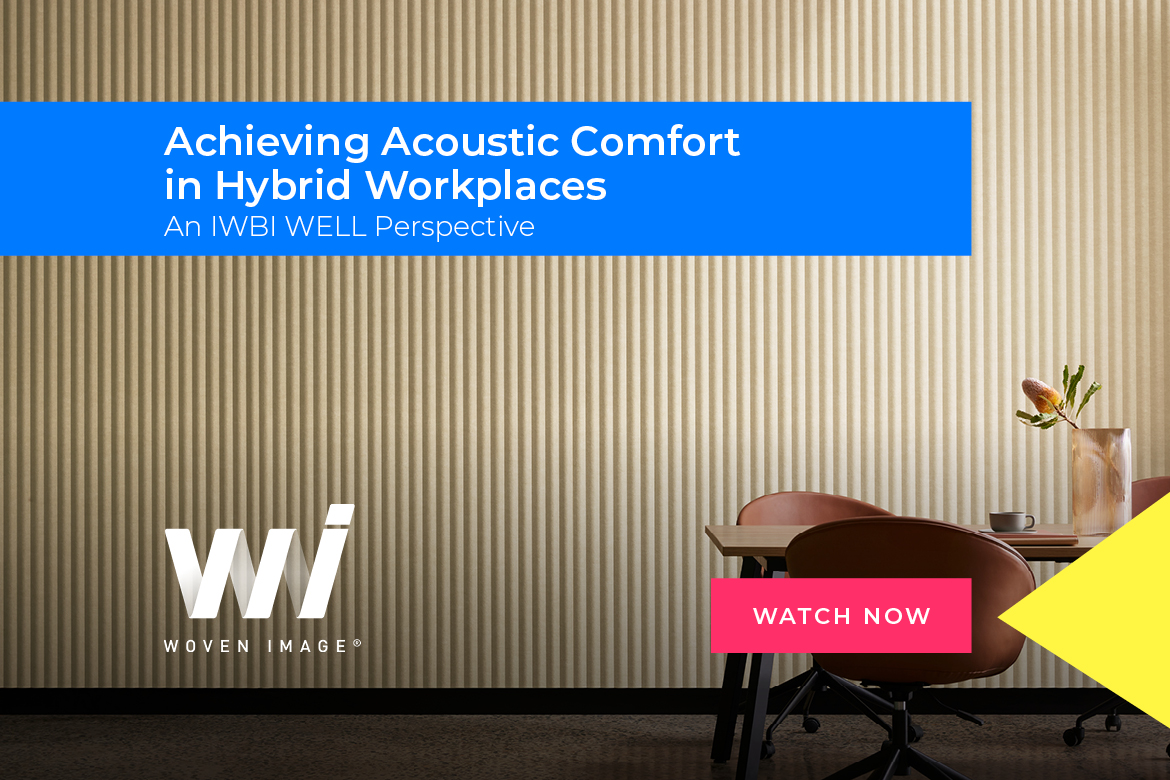Achieving Acoustic Comfort In Hybrid Workplaces – An IWBI WELL Perspective

Post-pandemic, it has become clear that the ‘hybrid workplace’ model – which values things like employee autonomy, flexibility, and work-life balance over regimentation and clock watching – is here to stay.
Organisations now moving to make these arrangements permanent should take note, and make sure that their new hybrid workplaces are productive spaces that encourage effective work, collaboration, and employee well-being.
From an architectural perspective, one of the best ways to achieve this is by adherence to the WELL Building Standard, a performance-based method of measuring the impact of the built environment on human health and well-being. A comprehensive system, WELL rates buildings according to several key measurements.
Titled Achieving Acoustic Comfort in Hybrid Workplaces – A ‘WELL’ perspective, this CPD Live session focuses on one of these measurements, sound. Our speakers identify the ways that acoustics affect the well-being of employees in hybrid workplaces and outline the ways that architects and designers can optimise these outcomes.
By the end of this session, you should be able to:
- Outline the main characteristics of ‘hybrid workplaces’ and explain how these differ from those of ‘traditional workplaces’
- Explain the role that acoustics play in creating good working environments.
- Identify what the WELL Building Standard is and outline how it works.
- Outline how the WELL Building Standard can be used to measure the acoustic performance of hybrid workplaces.
